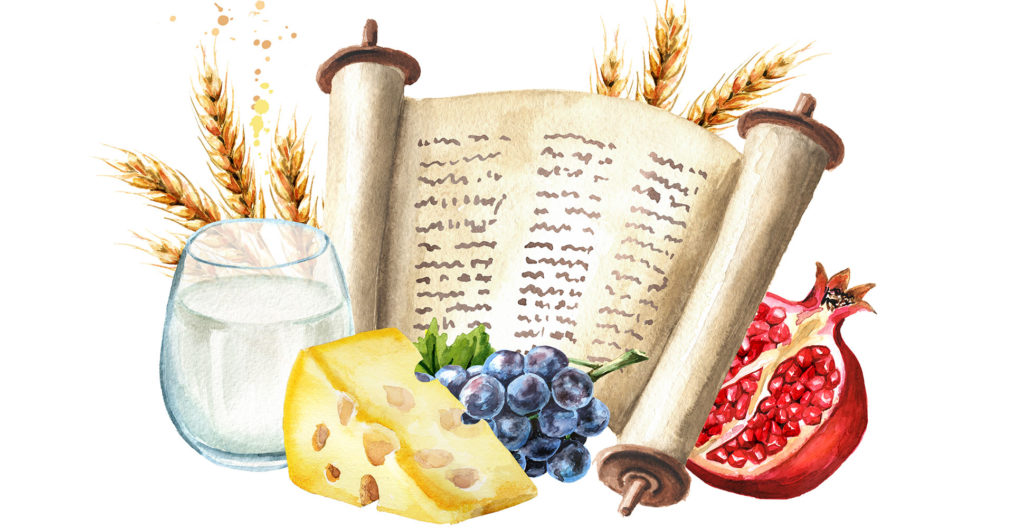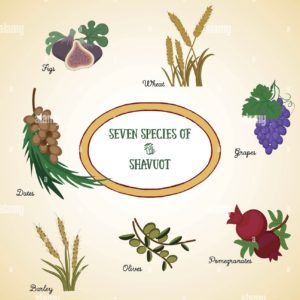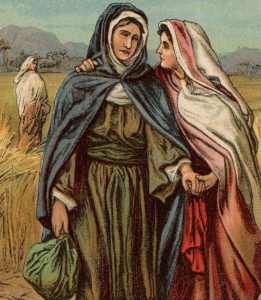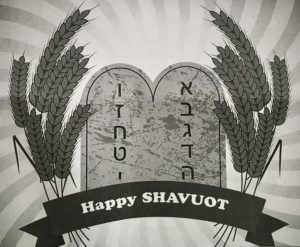Shavuot comes from the Hebrew meaning ‘weeks’. Its name comes from the seven week period known as the Omer which occurred after the Exodus from Egypt and the first Passover. It is celebrated on the 6th and 7th day of the Hebrew month of Sivan, which corresponds to May or June in the secular calendar. (See The Jewish Year).
Background
Shavuot is one of the three pilgrimage festivals- the others being Passover and Sukkot. It marked the end of the spring barley harvest and the beginning of the summer wheat harvest. The first crops of wheat and fruits known as Bikkurim, were brought to the Temple in Jerusalem as offerings to God. Therefore in the Torah, Shavuot is referred to as the Festival of the Harvest, the Day of the First Fruits and the Festival of Weeks.
The more spiritual significance of Shavuot however is that it is the celebration of the ‘Revelation’ – the giving of the Torah on Mount Sinai more than 3300 years ago.
After leaving Egypt the Jews wandered in the desert for seven weeks on their way to the Promised Land of Israel. Moses then received the Ten Commandments on Mount Sinai and tradition says that the entire Torah was ‘revealed’ at the same time. This encapsulated the fundamental principles of Judaism and was to regulate the life of every Jew. It is considered to be the greatest event in Jewish history.
What Happens
At Home
After the Temple in Jerusalem was destroyed in 70 C.E., crop and fruit offerings were no longer possible so instead Jews decorated their homes and Synagogues with greenery and flowers – a custom still practised today. Another reason for this is that Mount Sinai, usually a barren place, was covered with flowers at the time the Torah was given. Shavuot is also traditionally a time for intense study of the Torah, some Jews staying up all night.
In Synagogue
It is customary to read the section of the Torah containing the Ten Commandments and also the Book of Ruth. (See Jewish Festival Stories). This story is relevant to Shavuot both because of its references to the harvest but also because of Ruth’s attachment to Naomi, her Jewish mother-in-law, and subsequently Ruth’s acceptance of the Jewish faith. The Book of Ruth highlights the idea of a religious journey and the welcome given to sincere converts.
The famous quote by Ruth ‘your people will be my people and your God, my God’ shows she embraced the Torah in just the same way the Jews did on Mount Sinai.
The story teaches us that with devotion and commitment, anyone can become a member of the Jewish people.
Food
It is traditional to eat dairy foods at Shavuot, especially cheesecake and blintzes – little pancakes filled with a lemon or vanilla cream cheese filling. (See Traditional Jewish Recipes.)
The idea is that just as the Torah is the complete food for our soul, so milk is the complete food for our body. Another reason is that milk is white – the colour of purity and holiness. Dairy foods also symbolise the sweetness of the Torah and the Promised Land of Israel, known as ‘the land flowing with milk and honey’.
Summary
Shavuot is celebrated to remind Jews that even as a free people, we have responsibilities. Being free does not mean we can do everything we want. We have laws to keep and we have to behave in a responsible way so that we can live in the way God wants according to his Torah.






